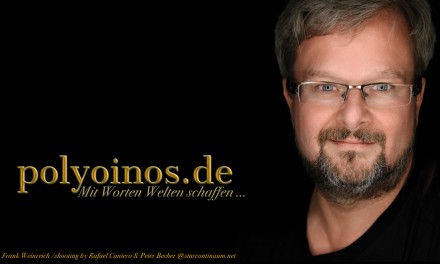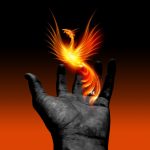Metaphysics of Myth
The Platonic Ontology of “Mythopoeia“
©Frank Weinreich

People around the world know and love J.R.R. Tolkien´s fantastic world Middle-earth and the stories placed therein, foremost, of course, the all-time bestseller The Lord of the Rings. Much fewer people, though, have knowledge about the author and his life and beliefs, and that is despite the fact that both are crucial for the understanding of Tolkien´s fiction.
But especially during the hype following Peter Jackson´s movies some information about Tolkien has leaked outside the circles of hardcore Tolkien-fandom and -research. Tolkien was a professor from Oxford, that´s widely known now. He was a philologist, kind of obsessed with languages and their history. It´s also said that he had a love for myth, especially for the old norse sagas, which are told in old Germanic languages, languages he held most dear among all tongues. Then it is also known that Tolkien held a firm belief in the teachings and dogmas of the roman-catholic faith. People who studied his life say, that this faith was the guiding star for all of his life. I guess he would agree to that.
Readers who made their way through the Silmarillion, which is some kind of a Toynbean study for Middle-earth, well, these readers, may now feel that Tolkien´s beliefs and professional ,obsessions‘ can be traced in his fiction. These readers may then also realise that the fictional work and the world created by Tolkien are very closely related to the real world we live in. There is, of course, no artist who in his paintings, music or books is able to invent new worlds and people which are not derived from our real world. So, if we know what an artist thought of when he was in the creative process, if we know his beliefs and perhaps even his philosophy, we are able to better understand what he meant with what he created. In the case of Tolkien, we then are able to see behind the courtain of Middle-earth and understand why this world and fantasy worlds in general were so important for him … And may be important for us. We than see that art and writing for him were expressions of other realities which are able to entertain, to teach, to give meaning to our real world and our lives. Thus these man-made realities are true and in a certain way real.
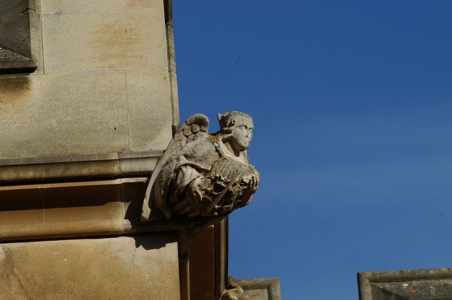
Another plane, where angels …
There are some places in Tolkien´s fictional work which express the ontological beliefs of the author and in which his personal convictions about creativity and human creational powers can be described and identified. “Mythopoeia” is the most important place of these. „Mythopoeia“ is a poem which he dedicated to C.S. Lewis in order to show him that myth does not consist of lies, but instead conveys facts and deeper truths.
This is what the poem really is about – it is the creed of Tolkien´s ontology and thus able to shed bright light on the meaning of his work. A work which Tolkien created as an entertaining piece of art, certainly. But it was also a piece of art or artful craftmanship that should teach and enlighten about the human condition.
And vice versa the human condition is what „Mythopoeia“ is about.
“Mythopoeia” is a powerful as well as an enigmatic poem. In wording and metre “Mythopoeia” recalls romanticism, whereby particularly John Keats´s “Lamia” may come to mind. Regarding content one is on the other hand also led to Classical antiquity, since the poem shows didactic qualities and ambitions like Peri Physeos by Epicurus or Lucretius´ De rerum natura, both of which were textbooks on natural sciences in their time, though written in verse and stanza.
Humphrey Carpenter, Tolkien´s biographer, reports the reason why Mythopoiea was written in the first place (Biographie, 169pp). According to Carpenter, Tolkien had a heated discussion with Hugo Dyson and C.S. Lewis one night in September 1931. The topic: Tolkien and Dyson tried to enlighten Lewis about the true meaning of myths. During the discussion Lewis is reported to have said that myths were lies although they might be of the highest artistry.
Tolkien intervened at once. He denied the opinion of myths being lies and is reported to have said, that myths convey truth. In the weeks following this evening “Mythopoeia” came into being as a condensed and artistically embroidered version of the arguments Tolkien held against Lewis’s accusation of myths being lies. That was the occasion that led to Mythopoiea being composed six years before On Fairy Stories, the famous statement of the relation between human artistic creativity and reality, which indeed must be read with and against “Mythopoeia” for a full understanding of Tolkien´s convictions about creativity and ontology.
The term “Mythopoeia” is a neologism, a creation stemming from the Greek words “mythos” and “poeisis”. “Mythos”, of course, means myth while “poiesis” stands for artistic creational processes like painting, composing or: writing. “Mythopoeia” therefore means myth-making, thus the title depicts the program of the poem, which was composed to explain what myth-making is and thereby show the ontological status of myths in general.
A close look on selected lines of the poem will be enough to show what this means.
The poem itself does not begin at once. Before the first line Tolkien inserted a subtitle marking the poem as a message from one who loves myths to one who is at least sceptical about myths. It is the myth-sceptic, the materialist, about whom the poet is talking when he begins with the lines “You look at trees and label them just so, / (for trees are ‚trees‘ and growing is ‚to grow‘)“. This is the materialistic world view pictured in poetic terms, and in particular the world view of the empirical sciences: looking (i.e. examining) and labelling. The materialist and the empirical sciences recognise phenomena in the perceptible world and classify them according to an explanatory system which attaches labels like ‚tree‘, ‚earth‘, ‚globe‘ and so on. Even a star, once a celestial phenomenon which was the topic of countless mythical and romanticising interpretations, is now nothing more than “some matter in a ball” (line 5), which runs on fixed trajectories, purposelessly and dumb (i.e. “inane”, 7). What the sceptic sees, is a universe with unbreakable natural laws, inescapable and without transcendental purpose. The second stanza reports the development of time, cosmos and earth, “from dark beginnings to uncertain goals“ (line 12). But the same stanza also states without doubt that God created earth and the life on earth: “God made the petreous rocks, the arboreal trees“ (line 19). Implicit in these lines is a critique of the concept of evolution as developed by Charles Darwin 70 years before the poem was written. That means a critical remark on the findings of modern natural sciences must be noted.
Stanza three then provides a hint of the superior role that language, names and the giving of names have for man himself, particularly man in his role as witness of the existence of all things (“trees are not trees until so named and seen“, line 29): trees are not trees before someone gives them a name (“named) and acknowledges (“and seen”) them as trees henceforth. Acknowledging and naming can only be done by a sentient observer which is capable of naming things – mankind. It is not easy to unfold what is hidden in this meaningful third stanza. And since it is so important for the whole poem, we will have to examine the stanza more closely.
1. Trees become trees only when they are acknowledged for what they are and, which is even more important, only when they are given the name “tree”. Tree in this line stands for every phenomenon of the world. If this is right, the whole world and everything in it comes into its true being only when it is given a name. In a non-materialistic, in a dualistic world view, which is definitely the one Tolkien held, this perfectly makes sense. Why? Because the process of acknowledgement, and foremost the act of name-giving, is a strong hint for the existence of a second level of being. One can imagine this as a second plane of being in the ontological sense: it is a universe of words or ideas.
2. Line 31 then tells about the name-giver. Language discloses him as what he is. This disclosure means that through his faculty of speech man becomes man. That is a topic which is familiar to every philologist and philosopher. That is the ancient definition of man: man is the animal that speaks.
3. The next lines can be read as a characterisation of language. Language is a “faint echo and dim picture of the world“. But why is it that speech is thought of as dark and faint in its ability to reproduce the phenomena of the world? The poem insists that language is “neither record nor a photograph“ (line 33). One explanation comes to mind. If speech and the declaration of names were nothing more than a photograph, they would also be nothing more than another entity like physical matter. But this is not what words are, words produce a faint echo and dim pictures of reality, thus providing an imperfect portrait of things. This means that they portray another world than the one which a tape-recorder and camera would picture, hence another world than that of pure matter. That can then only be the world which is the home of the tree which received its name.
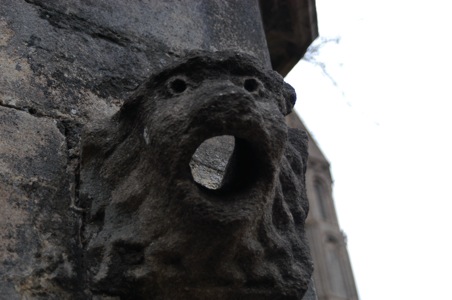
… and monsters reside?
What we find in these lines is the belief that there must in fact be a level of existence besides the mere material level. And this spiritual level must have something to do with the human faculty of speech and thought.
The poem goes on to describe processes of thought. Lines 39 to 44 say that man digs out foreknown things from memory and thus produces spiritual ideas and thoughts. That is an ancient figure of thought. Ancient Greek philosophy would not use the term “digging” (line 39) but instead speak of birth and of the art of a midwife who assists in giving birth. Giving birth not to a child but to a memory, to foreknowledge. That is the so-called Socratic method, which helps (re-)produce the remembrance of a knowledge with which men are born and which they only need to remember. The concept of remembering incarnated and immortal truth is explained in detail for the first time by Plato around 300 B.C.
But where does the knowledge Socrates and Plato postulate come from?
It comes from another plane of being, from the world of ideas, which, according to Plato, is in an ontological sense the level where the true being or the essence of all things resides. Here we find another reference to a transcendental plane or world. Nowadays the basics of Platonic philosophy are not taught in school any longer, at least in Germany. But in Tolkien´s days every well-educated young man like himself was completely familiar with this concept, so it is certain, that Tolkien used this picture deliberately.
Furthermore these lines provide the first indication of the special role art and creativity play. What does man remember from foreknown knowledge? The elves and their looms and forges (lines 42 – 44). Those are the same elves about whose ‚magic‘ Tolkien was later to write in a famous letter to Milton Waldman: their „object is Art not Power, sub-creation not domination and tyrannous re-forming of Creation“ (L, 146). The elves and their forges and looms, which work their art in the heads of man, serve as a metaphor for art and the worth of art and creativity, which man remembers. And it should be noted that art according to Tolkien is equipped with “great power“ (line 41).
Stanzas 4 to 11 then describe in beautiful and poetical words the magic one can also recognise in the material world. They deal with the perils of the real world, if man neglects his spirituality. Examples of evil are given which show that Sauron and Melkor, the chief-villains in Middle-earth, are evil because they suppress people and thought and spirituality alike, as would do a totally materialistic life if we were to lead one. Stanza 11 than gives another particular critique of modern science which also is accused of suppressing or even killing the spiritual side of man. Scientific knowledge is held in quite low regard.
But what is it then, what man can and should know?
How wide is the terrain that knowledge can cover?
What is it that man can come to know?
Tolkien has shown what he objects to, he has shown what a myth is and that myths can convey truth, even though they are but faint and dim truths. This is the point where an old image of thought springs to mind – faint pictures, dim sounds, reflections?
Does not that remind one of Plato´s Cave?
The transcendental second plane of being cannot be brought onto earth. The last stanza makes it clear that the true essence of all things can only be experienced on the second plane which in the poem is then equated with Paradise (131). In Paradise man´s eye now has the chance of a really clear view on things as they are. This view encompassess a sort of liberation of the spectator: one is no longer held captive by false images. And what is it that the poet and reader are “made free” from? The mistaken assumptions of an empiricism which does not allow other modes of acquiring knowledge. The important point is that it is possible in Paradise to renew the sight of truth, because the term “renew” again takes up the topic of digging out foreknowledge, which I mentioned before. Another key term of this stanza is “mirrored truth”. Mirrored truth is again a Platonic picture. It refers to the famous allegory of the cave, the most influential idea of Plato´s philosophy (Republic 514a-515c). This parable tells the story of people who are chained inside a cave.
They are looking upon a wall before them, unable to turn around. They can only see shadows on the wall and hear sounds originating from outside the cave. The shadows are faint, the sound is dim, both are but a reflection of the real world outside the cave. These people will never come to know reality but only experience incomplete reflections if they are not freed, stand up and look at what really is outside their cave. That means that the real world only allows to see reflections from the second plane, just like the reflections the prisoners in Plato´s cave can see and hear. The possibility “[to] see that all is as it is“ (lines 135f.) exists only on the second plane, in the Platonic world of ideas, in the “Mythopoeian Paradise”. And also the act of liberation in Paradise connects “Mythopoeia” to Plato since the view of truth, which man experiences by leaving the cave, constitutes an act of liberation.
What do these things mean in philosophical terms? It is quite easy to summarise that: the beliefs and expressions which make up “Mythopoeia” are pure Platonism! The whole poem is a short version of the basics of ancient metaphysics. Tolkien expresses the Platonic belief that whoever is searching for knowledge only in the material world looks upon the walls of a cave, seeing nothing but reflections of what really is going on behind their backs. Not until man gets up, turns around and leaves the cave is he able to see “from mirrored truth the likeness of the True“ (line 134). For Tolkien the situation is even more dramatic than it was for Plato, because the Professor sees mankind not just looking at the walls of a cave but standing before an abyss. It is the abyss of modernity, including modern science, that leads to the conclusion: “I will not walk with you progressive apes, / erect and sapient. Before them gapes / the dark abyss to which that progress tends“ (lines 120 to 122).
What should one make of all that?
The theory of ideas and a second plane of existence? Creativity and creation? First of all these are speculative thoughts and can be nothing more until the second plane grants proof of its existence. These are questions of faith and belief, which, by the way, is of course also true for Plato´s metaphysics. My aim is not to attack or defend the speculations described, but to explain what stands behind “Mythopoeia” and to remind Tolkien´s readers that the roots run deep and that you have to follow them in order to gain an understanding of Tolkien´s convictions and what he wished Middle-earth should be.
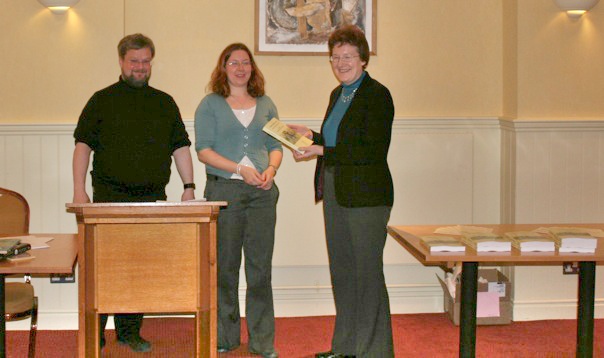
Tolkien´s Shorter Works are given to Claire Chinnery,
librarian of Peterborough Regional College, after the lectures were held.
(Cambridge, Fen Ditton 2/´09)

